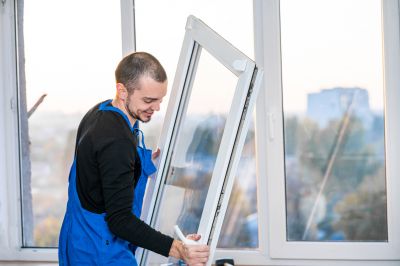Top-Rated Storm Restoration Products For Quick Property Recovery
Choose from proven solutions that help you restore safety and stability to your home or business after storms.
 Storm restorations in New Albany, IN, often require a diverse array of products to effectively repair and reinforce structures affected by severe weather. From roofing components to water mitigation tools, having the right supplies can make a significant difference in restoring safety and stability. Proper planning involves understanding the various materials and equipment available to address different types of storm damage, including wind, hail, heavy rain, and flooding.
Storm restorations in New Albany, IN, often require a diverse array of products to effectively repair and reinforce structures affected by severe weather. From roofing components to water mitigation tools, having the right supplies can make a significant difference in restoring safety and stability. Proper planning involves understanding the various materials and equipment available to address different types of storm damage, including wind, hail, heavy rain, and flooding.
Top Overall Option
Heavy-Duty Roofing Materials
Heavy-duty roofing materials such as reinforced shingles or metal roofing options are widely used in storm restoration efforts for their durability and resistance to weather elements. These materials are designed to provide long-lasting protection against wind, hail, and rain, helping to safeguard structures from future storm impacts. When selecting roofing products, it's important to consider compatibility with existing structures and local building codes to ensure optimal performance and safety.
Types of Products For Storm Restorations
Reinforced Roofing Shingles
Designed to withstand harsh weather conditions, reinforced shingles offer enhanced durability for storm-prone areas.
Metal Roofing Panels
Metal panels provide strength and longevity, making them a popular choice for storm-resistant roofing.
Waterproof Sealants and Membranes
Essential for sealing gaps and preventing water intrusion in damaged roofs and walls.
Water Extraction Pumps
Used to remove floodwaters quickly and efficiently from affected properties.
Industrial Fans and Drying Equipment
Help in drying out water-damaged areas to prevent mold growth and further deterioration.
Structural Reinforcement Supports
Steel braces, anchors, and supports stabilize compromised structures during repairs.
Roof Underlayment
Additional protective layers installed beneath roofing materials for extra moisture resistance.
Storm Windows and Shutters
Protect windows from debris impact and high winds during storms.
Flood Barriers and Sandbags
Temporary or permanent barriers to divert floodwaters away from properties.
Debris Removal Tools
Heavy-duty rakes, shovels, and debris loaders facilitate cleanup after storms.
Emergency Lighting and Power Sources
Portable generators and lighting ensure safety and visibility during restoration work.
Safety Gear and Protective Equipment
Helmets, gloves, and harnesses protect workers during hazardous repair activities.
Insulation and Weatherproofing Materials
Help restore thermal barriers and prevent future moisture issues.
Gutter and Drainage Systems
Efficient drainage reduces water accumulation and prevents foundation damage.
Structural Plywood and Sheathing
Used to replace damaged exterior sheathing and provide a base for roofing or siding.
Popular Choices
Commonly selected for their balance of durability and ease of installation in storm restoration projects.
Favored for their longevity and resistance to extreme weather conditions.
Ideal for quick sealing of leaks and minor repairs during storm aftermath.
Essential for removing floodwaters from basements and low-lying areas.
Help accelerate drying processes in water-affected structures.
Designed to withstand high winds and flying debris during storms.
Widely used for temporary flood protection and property safeguarding.
Provide access for roof repairs and inspections in storm-affected areas.
Ensure worker safety during high-elevation or hazardous repairs.
Provide an extra layer of protection beneath roofing materials against moisture intrusion.
Used to reinforce weakened building frameworks during restoration.
Protect exterior surfaces from future water damage.
Prevent debris buildup and ensure proper drainage during storms.
Provide illumination during power outages in storm-affected areas.
Tools like grapples and hydraulic cutters facilitate efficient cleanup.
Help in reducing moisture buildup and improving airflow in storm-damaged roofs.
Durability and resilience are key factors when selecting products for storm restoration. High-quality roofing materials, such as reinforced shingles or metal panels, are designed to withstand harsh weather conditions. Waterproofing membranes and sealants play a crucial role in preventing leaks and moisture intrusion, which can lead to further damage if not properly addressed. Additionally, water extraction and drying equipment are vital for managing floodwaters and preventing mold growth in affected areas.
In the aftermath of a storm, safety is paramount. Products like heavy-duty ladders, safety harnesses, and protective gear help restoration workers perform their tasks securely. Structural supports and reinforcement products can also be used to stabilize compromised buildings until permanent repairs are completed. Whether dealing with minor repairs or extensive restoration projects, selecting the appropriate products ensures a thorough and efficient recovery process, minimizing long-term issues and restoring properties to their pre-storm condition.
Key Buying Considerations
- Assess the specific type of storm damage to determine suitable products.
- Check compatibility of materials with existing structures and local building codes.
- Prioritize durability and resistance ratings for storm-prone environments.
- Consider ease of installation and availability of professional support.
- Evaluate the long-term performance and maintenance requirements of products.
- Determine the appropriate size and capacity for water removal and drying equipment.
- Ensure safety features are incorporated into equipment and protective gear.
- Look for products with proven performance in similar storm scenarios.
- Factor in the environmental conditions of your location, such as wind speeds and flood risks.
- Review customer feedback and product reviews for insights on reliability.
- Consider budget constraints while balancing quality and effectiveness.
- Verify warranty and support services offered by suppliers.
- Plan for temporary solutions like barriers and sandbags if immediate protection is needed.
- Evaluate the ease of storage and transportation of restoration products.
- Check for compatibility with future upgrades or repairs.
